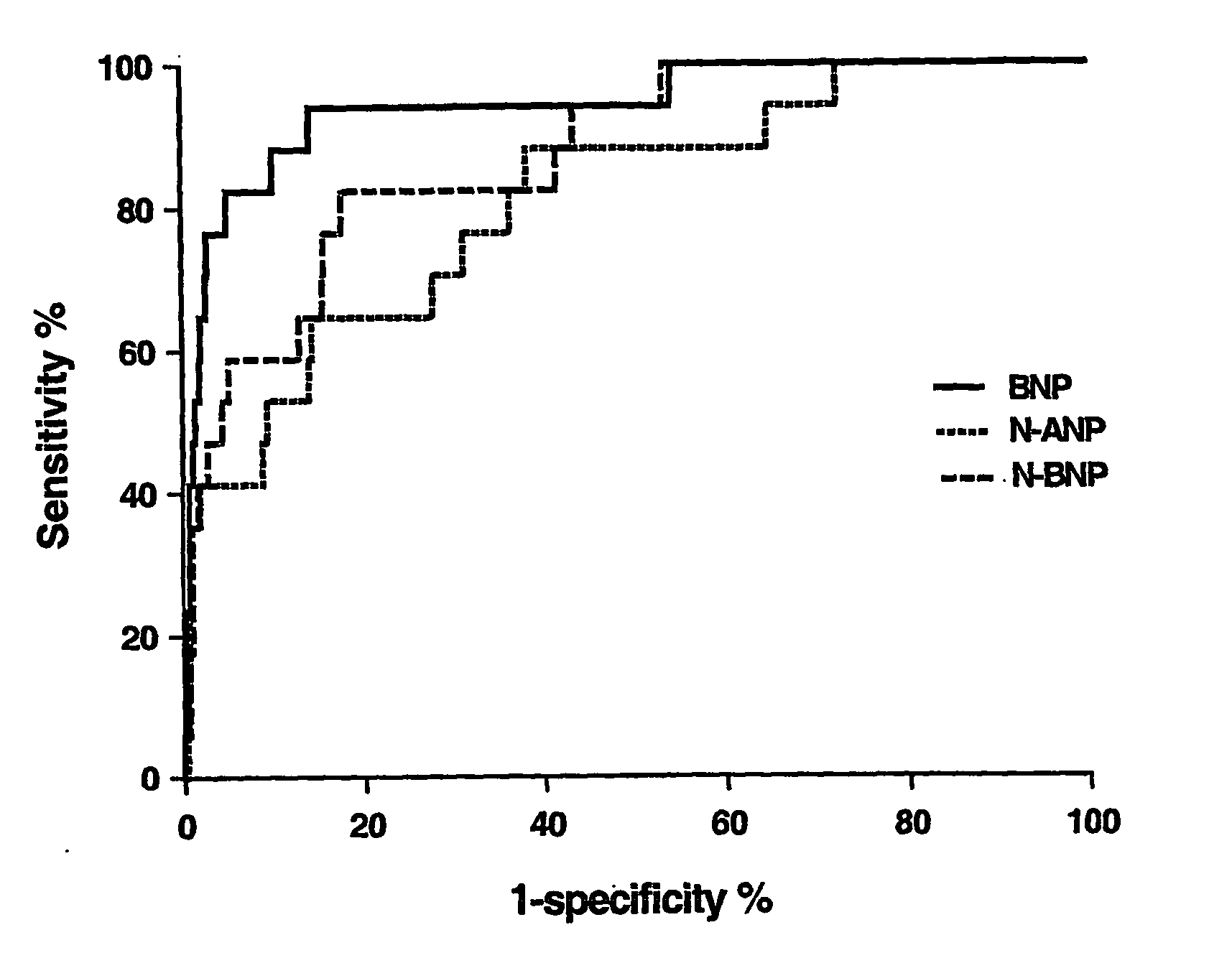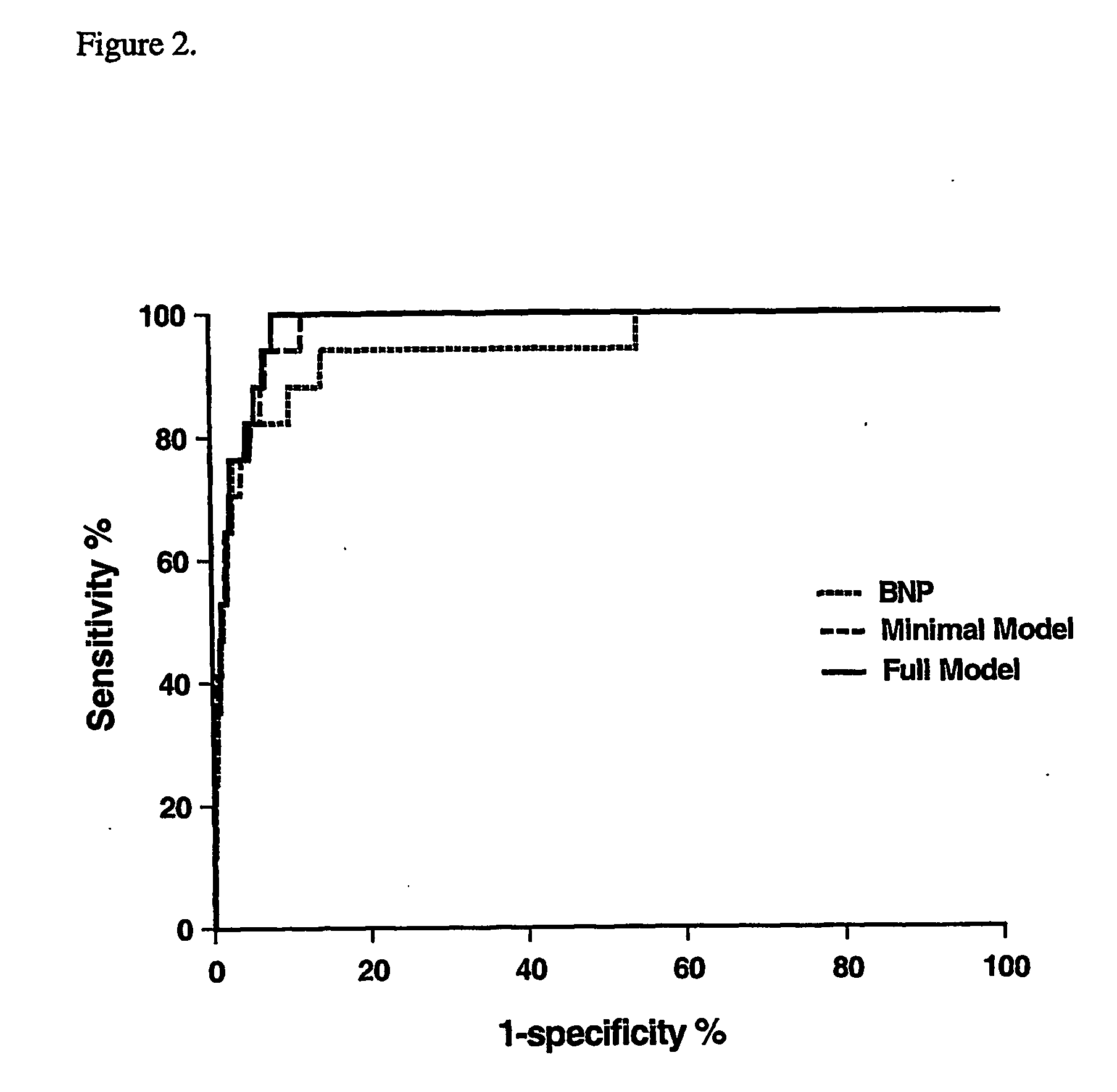Method for prediction of cardiac disease
- Summary
- Abstract
- Description
- Claims
- Application Information
AI Technical Summary
Benefits of technology
Problems solved by technology
Method used
Image
Examples
Embodiment Construction
[0031] Thirteen hundred and thirty nine patients (men aged 45-80 and women aged 55-80) of 2392 patients who were approached were entered into the study. All selected patients were from primary care and without a prior diagnosis of heart failure or LVSD. Demographic features are shown in Table 1. Information collected included past medical history of ischaemic heart disease (myocardial infarction or angina), hypertension, diabetes, smoking status, information on prescribed medication, and a check that the patient had not had a confirmed prior diagnosis of heart failure or LVSD. The criterion standard used to diagnose LVSD was echocardiography performed using a Sonos 5500 machine (Philips Technologies). Wall motion score indices (where a score of >2 is indicative of hypokinesis, akinesis, or dyskinesis) and ejection fractions measured during echocardiography were obtained using recognised methods.
[0032] In order to measure the levels of natriuretic peptide, twenty mls of peripheral v...
PUM
 Login to View More
Login to View More Abstract
Description
Claims
Application Information
 Login to View More
Login to View More - R&D
- Intellectual Property
- Life Sciences
- Materials
- Tech Scout
- Unparalleled Data Quality
- Higher Quality Content
- 60% Fewer Hallucinations
Browse by: Latest US Patents, China's latest patents, Technical Efficacy Thesaurus, Application Domain, Technology Topic, Popular Technical Reports.
© 2025 PatSnap. All rights reserved.Legal|Privacy policy|Modern Slavery Act Transparency Statement|Sitemap|About US| Contact US: help@patsnap.com



